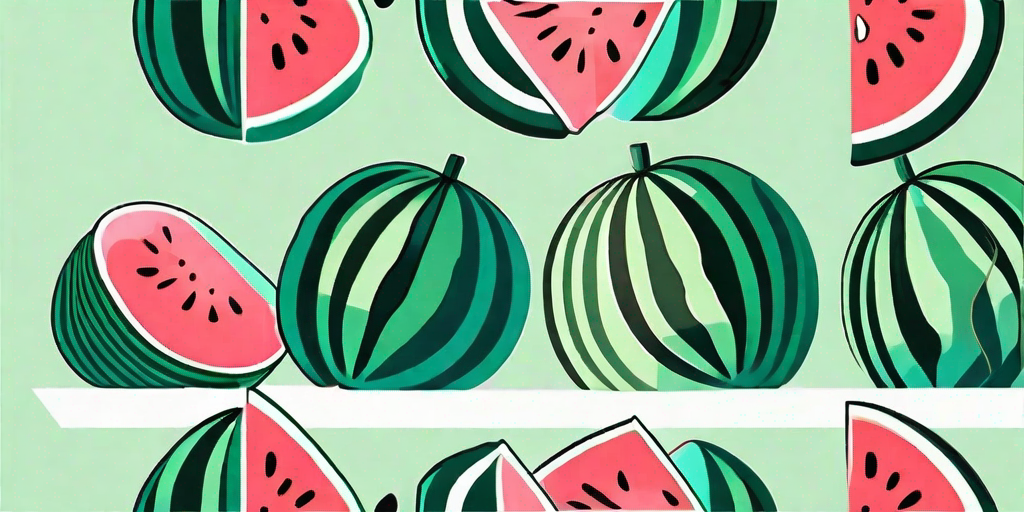
Are you craving a sweet, juicy watermelon but don't have a backyard to grow one? Fear not, fellow melon enthusiasts, for we have the solution to your predicament. Growing watermelon in containers is not only possible, but it's also surprisingly easy and rewarding. So, buckle up and prepare for a journey into the world of container gardening, where we'll unravel the secrets to growing the sweetest summer treats right on your balcony or patio.
Understanding the Basics of Watermelon Cultivation
Before we dive into the nitty-gritty of container gardening, it's important to understand the basics of watermelon cultivation. Watermelons, like other cucurbits, are warm-season crops that require plenty of sunlight, water, and nutrients to thrive. They also need a long growing season, typically 70-90 days, depending on the variety.
Watermelons are vine plants, which means they tend to sprawl. However, don't let this deter you. With the right container, trellising system, and dwarf or bush variety of watermelon, you can successfully grow these juicy fruits in a limited space.
Choosing the Right Container
When it comes to container gardening, size does matter. Watermelons have extensive root systems and need plenty of room to grow. A container that is at least 5 gallons in size is a good starting point, but a 10-15 gallon container is even better. The container should also have ample drainage holes to prevent waterlogging, which can lead to root rot.
Material-wise, you can choose from plastic, terracotta, or ceramic pots. Plastic pots are lightweight and retain moisture well, but they can heat up in the sun. Terracotta pots are heavier and more stable, but they dry out quickly. Ceramic pots are a good middle ground, offering both stability and good moisture retention.
Choosing the Right Watermelon Variety
Not all watermelons are created equal, especially when it comes to container gardening. Traditional watermelon varieties can grow vines up to 20 feet long, which is not ideal for a small balcony or patio. Instead, look for dwarf or bush varieties that are bred for small spaces. Some popular choices include 'Sugar Baby', 'Bush Sugar Baby', and 'Golden Midget'.
These compact varieties produce smaller fruits, typically 6-12 pounds, but they pack the same sweet, juicy flavor as their larger counterparts. Plus, their shorter vines (3-6 feet long) are easier to manage in a container setting.
Planting and Caring for Your Watermelon
Planting
Start by filling your container with a high-quality potting mix. Watermelons prefer a slightly acidic to neutral pH (6.0-7.0), so adjust your soil accordingly. Plant 2-3 seeds per pot, about 1 inch deep. Once the seedlings emerge and develop their first true leaves, thin them out to the strongest one.
Place the container in a sunny location, where the plant can receive at least 6-8 hours of sunlight daily. If you're growing indoors, supplement with grow lights.
Watering and Fertilizing
Watermelons are thirsty plants, but they don't like wet feet. Water deeply but infrequently, allowing the top inch of soil to dry out between waterings. Overwatering can lead to root rot and other fungal diseases.
As for fertilizing, watermelons are heavy feeders. Use a balanced, slow-release fertilizer at planting time, then switch to a high-potassium fertilizer once the plant starts flowering. This will encourage fruit development and enhance the sweetness of your watermelons.
Supporting and Pruning
Even dwarf watermelon varieties need some form of support to keep their fruits off the ground. A simple trellis or tomato cage will do the trick. As the plant grows, guide the vines onto the support and secure them with soft ties.
Pruning is not necessary for watermelons, but it can help improve air circulation and sunlight exposure. Remove any yellow or diseased leaves, and consider pruning the tips of the vines once they reach the edge of the container to encourage bushier growth.
Harvesting Your Watermelons
Knowing when to harvest your watermelons can be a bit tricky. The color of the fruit and the tendril nearest to the fruit are good indicators. When the bottom of the watermelon turns from white to creamy yellow and the tendril turns brown and dries up, it's usually time to harvest.
Another method is the thump test. Give the watermelon a tap; if it sounds hollow, it's ripe. However, this method is not always reliable and requires some experience to get right.
Frequently Asked Questions
Can I grow watermelons indoors?
Yes, you can grow watermelons indoors with the right setup. They need plenty of light, so a south-facing window or supplemental grow lights are necessary. Also, indoor air tends to be drier, so you may need to mist your plants regularly to increase humidity.
Why are my watermelons not fruiting?
Watermelons may fail to fruit for several reasons. Insufficient sunlight, overwatering, nutrient deficiencies, and poor pollination are common culprits. Make sure your plants are getting enough light, water, and nutrients, and consider hand-pollinating if there are no bees or other pollinators around.
Why are my watermelons splitting?
Watermelons can split due to sudden changes in watering. If the soil dries out too much and then gets soaked, the watermelon can absorb water too quickly and burst. To prevent this, try to keep the soil evenly moist.
Conclusion
There you have it, the juicy secrets to growing watermelon in containers. With a bit of patience and care, you can savor the sweetest summer treats right from your balcony or patio. So why wait? Grab a pot, some seeds, and start your container gardening adventure today!











